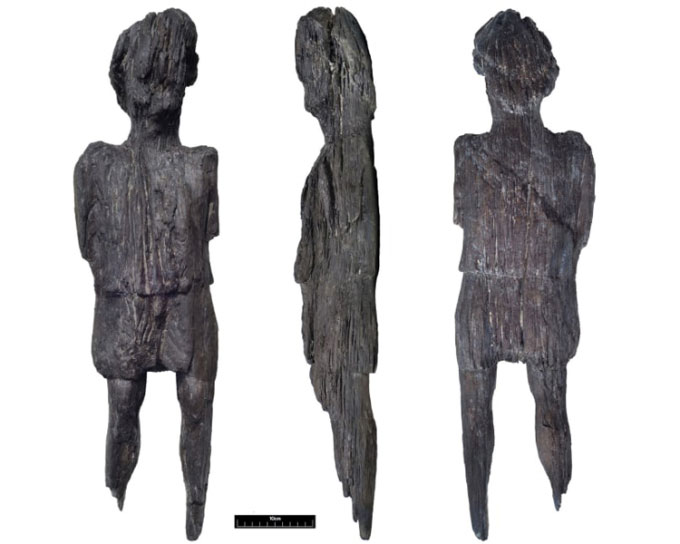The Roman statue has endured for a long time thanks to being buried in an oxygen-poor layer of clay under a water ditch, preventing wood rot.
Experts have unearthed a rare and intricate wooden statue from the early Roman period during the HS2 high-speed rail project in England, CNN reported on January 15. The statue, dating back approximately 2,000 years, was discovered last July beneath a flooded Roman ditch in a field in the village of Twyford, Buckinghamshire, in southern England.

The wooden statue of a human from the Roman era found in Buckinghamshire. (Photo: HS2)
Initially, it was thought to be just a piece of degraded wood. However, scientists later determined that it is a human figure measuring 67 cm tall and 18 cm wide. The statue is carved from a single piece of oak, likely dating from the early Roman period based on its carving style and tunic-like clothing.
Although the statue is in relatively good condition for its 2,000-year age, the feet and lower arms below the elbows have rotted. Some details are still visible, such as the hairstyle or hat, legs and calves, with the head slightly tilted. The tunic worn by the figure appears to be cinched at the waist and extends above the knees.
“This is a particularly rare discovery,” commented Helen Wass, head of the heritage department at HS2. Wass also noted that scholars have only recorded two other examples of wooden statues from the Roman period in Britain.
The statue in Twyford likely dates back to the 1st century, as pottery found beneath the water ditch also originates from that period. “We know that this item was quite old before it was buried. There are signs of wear, suggesting it was a cherished object. Therefore, it is possible that someone carried it with them or carved it while living here. We are still not exactly sure,” Wass added.
Archaeologists believe that the statue has been well-preserved due to the oxygen-poor clay layer in the ditch preventing the wood from rotting. There is also a possibility that ancient people intentionally placed the statue there.
“This is a truly remarkable discovery that helps us understand the past. The statue is intricately carved and extremely interesting because organic objects from this period are rarely preserved,” said Jim Williams, senior scientific advisor at Historic England.
Experts have sent a piece of the statue, which was found separately in the ditch, to a scientific facility for carbon dating to accurately determine the statue’s age. Meanwhile, stable isotope analysis may also help them trace the origin of the wood.


















































